What were your initial impressions of Flexdym microfluidic chips, and how has your perception evolved since using them in your research?
I come from microfluidics on glass and PDMS, which I used during my thesis (2011-2014). Flexdym immediately enabled me to overcome the difficulties I had encountered at that time: evaporation / gas permeability and bonding issues for PDMS, and long and painful fabrication as well as desing limitations for glass. However, I encountered several challenges. Flexdym tended to trap more dust; bonding was not optimal due to the hydrophilisation conditions; and hot embossing made it difficult to control the thickness and level of the chip.. However, I always managed to achieve a favorable outcome for my applications, despite the fact that the knowledge surrounding its use was still rather limited at that time.There is no perfect material in microfluidics but, after than ten years using Flex, I can confirm that it ideally suits most of my applications. It is most likely easier to start with it today, with the current publications and the community of users that has formed.
Compared to other materials you may have used, what specific advantages did you find most significant when working with Flexdym chips (e.g., ease of use, replication accuracy, cost-effectiveness)?
Reversible and permanent bonding compatible with high pressure, capacity to bond with other thermoplastics (in particular polystyrene), fast and re-usable prototyping, steady surface treatments and stability for cell culture
Could you provide an example of how Flexdym microfluidic chips specifically benefited or advanced your research (e.g., in terms of speed of prototyping, experimental results, or new capabilities)?
The most recent example I can give is the thesis of one of my PhD students on myelinating on chip microphysiological systems in the peripheral nervous system. This process takes 30 days and requires a large number of replicates for our cell culture. We carried out dozens of campaigns using almost 700 chips, 100 of which were reused to demonstrate their recyclability. This represented a significant gain in resources and helped us produce several publications, one being on the recyclability in cell culture context.
Flexdym is known for its versatility across applications like cell culture, microfabrication, and sensors. In what specific applications did you utilize the chips, and how well did they perform in those contexts?
I used flexdym for cell culture (endothelium on chip, compartmentalized neuron culture) as well as analytical chemistry (membrane encapsulated filtration device, acoustic micromixers) and it always exceeded my expectations.
What aspects of Flexdym microfluidic chips would you highlight as most valuable to other researchers considering this material for their own projects?
Depends. For cell biologists I would say ease of assembly, stability (very convenient when you are sending chips to a collaborator but also long term culture). For analytical chemists, I would say high pressure / flow rate, reduced gas permeability, absorption and leaching. In general, the capacity to produce quickly chips is convenient for example for biomedical engineering students from our master to achieve fast prototyping.

